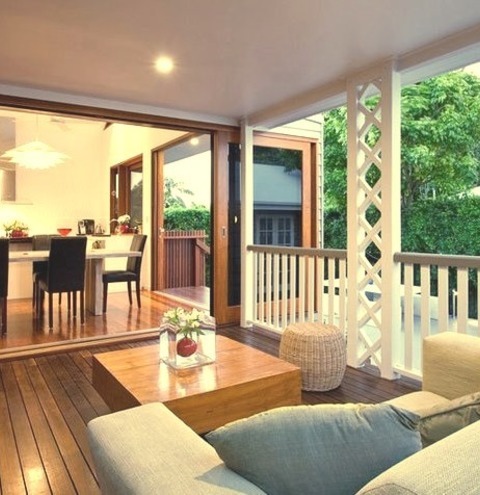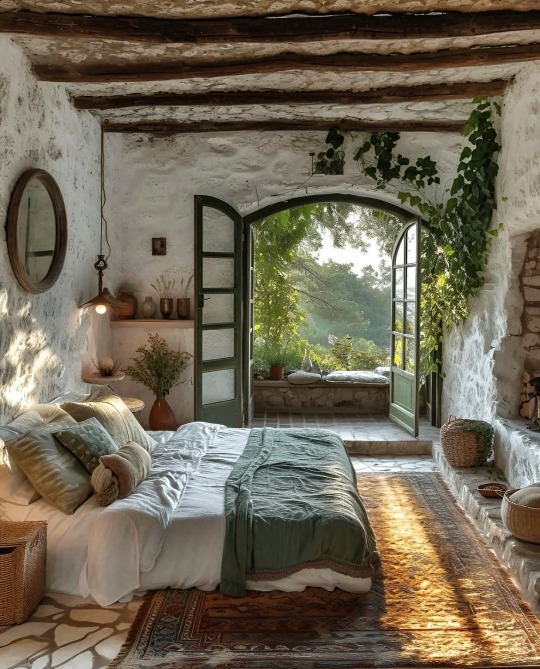#Home Designs
Explore tagged Tumblr posts
Text

#design#home design#designers#furniture design#designer#designs#interior design#home#home decor#home & lifestyle#home interior#home designs#furnishings#furniture#styleinspo#styleinspiration#photography#style#tumblr#fashion#camera#art#life#mood#moodboard#lighting#home lighting#home life#inspired#inspiring
231 notes
·
View notes
Text
Ninjago High School AU Housing
Sorry in advance for the long post 😅 the rooms were made with the app ‘Home Design 3D’.
In this AU I imagined that Kai and Nya’s parents went missing when they were a bit older. Roughly 10 and 8 maybe? They’ve been in foster care ever since. Except once Kai had turned 17 and they were allowed to move out by themselves with a scout coming by every so often to check how they’re doing. Their apartment is skinny and the roof is low. The siblings don’t spend much time there, preferring to roam the streets, work, or visit their friends in the afternoons. (The first photo is taken from the front door.)




Jay, I’ve mentioned maybe twice, lives in student housing. Basically it’s a program for kids from regional areas to come into the city for their education. The apartments are TINY. Smaller than Kai and Nya’s (although theirs is small). These apartments are specifically made to be student housing, so it’s two rooms (1 bath, 1 main), with the ‘bedroom’ curtained off to one side (I took the curtain out in the image). There are common areas in these buildings where everyone hangs out communally, (Jay was the life of the party), and there were regular cleaners for these spaces. The red door is the front door and is actually white. I just coloured it for ease of understanding.



Zane lives with his father and younger brother. They were conceived via IVF so they don’t know their mothers, and technically they are half siblings, but I digress. They live in a small house in the outer suburbs very close to the city. Zane had their own room. Dr Julien (I think I spelt it Julienne actually) was sad to see his eldest move out so early, but drops by the new shared apartment every so often to give them food. I think Zane would have a pretty minimal bedroom in terms of colour but they’d add some pops through decoration they can move whenever they feel.

Cole lives with his father in a very spacious house for inner city. Lou is a very successful retired dancer (and minor millionare). Cole has his own room, and a view of their courtyard where his mother used to make rock sculptures. Lily actually carved some of these without her powers as she got weaker due to cancer. Cole’s bedroom is always super messy but I couldn’t convey that due to app limitations lol.

And lastly, here is the floor plan for the new apartment: This isn’t immediately how it looks, I imagined this would be how it looked after a couple of years. Also they have seperate bedsheets but the bunk beds I used here couldn’t customise them separately. I do believe wholeheartedly though that someone *cough Nya cough* got bored one day and the others came home to her and Lloyd painting the doors fun colours.

2 notes
·
View notes
Text
Roof Extensions Deck in Brisbane

Examples of mid-sized, contemporary backyard deck renovations that include roof extensions
2 notes
·
View notes
Text
home designs & floor plan
residential design custom home plans architectural designs home blueprints floor plan ideas modern home plans layout options https://3d-labs.com/product/home-designs-floor-plan/ "Explore our Home Designs & Floor Plans, featuring a variety of layouts and styles to suit every need, ensuring your perfect home comes to life."

https://3d-labs.com/
0 notes
Text

#Bedroom#Luxury home#Luxury#luxury life#luxury living#aesthetic#decor#home decor#lifestyle#lifestyle blog#photography#home & lifestyle#architecture#classy#classy life#home#interiors#home interiors#interior design
23K notes
·
View notes
Text

8K notes
·
View notes
Text
Stunning Architectural Masterpiece Awaits
Explore this exceptional architectural design that blends modernity with functionality. Discover how each space is crafted for inspiration, from innovative layouts to breathtaking aesthetics. Experience a perfect fusion of beauty and purpose.Best architecture designer in malappuram
1 note
·
View note
Text

A bond made of fire and spider webs
#tma#gertrude robinson#agnes montague#the magnus archives#the desolation#tma fanart#I love them!!!! I wish we got to see more of both of them#agnesgertrude#I believe that's their ship name but you're free to interpret this however you'd like <3#might play around with my design for them but I'm quite happy with this young Gertrude I think#magpod#rusty quill#commissions open#I'm still sick btw so I'm probably staying home tomorrow 😔#I hope at least I'll have time to draw some more but I'm behind on some translations#shrews art#I'm at the middle point of s5 in my relisten and I'm already sad for when I finish it aaaaaa#this podcast is so dear to me#art#digital art#you can get printables of this and other drawings in my shop!! linked in pinned post :D#smokeyeyes
7K notes
·
View notes
Text
How to Choose the Right Builders for Your Home Renovation Project

Renovating your home is a significant investment, both financially and emotionally. Whether you're updating a single room, adding an extension, or completely remodeling your house, choosing the right builders for your home renovation project is crucial to achieving your dream home. With the right home builders by your side, the renovation process can be smooth, efficient, and even enjoyable. Here’s a guide to help you choose the best builders for your home renovation project.
1. Understand Your Renovation Needs
Before you start searching for a home builder, it’s essential to have a clear understanding of your renovation goals. What do you want to achieve with your renovation? Are you looking to update your home's design, improve its functionality, or increase its value? Knowing the scope of your project will help you find builders with the right expertise.
For example, if you’re planning a custom renovation that involves significant structural changes, you’ll want to find a home builder with experience in custom home designs and complex construction projects. On the other hand, if you’re simply updating your home’s interior design, a builder who specializes in cosmetic renovations might be a better fit.
2. Research Home Builders
Once you have a clear vision of your renovation project, start researching potential home builders. Look for builders who specialize in home renovations rather than new home construction, as the skills and experience required can differ. A renovation-focused builder will be familiar with the challenges of working within existing structures and can offer solutions that new home builders might not consider.
Begin by asking for recommendations from friends, family, or neighbors who have completed similar renovation projects. Online reviews and testimonials can also provide valuable insights into a builder’s reputation and quality of work. Additionally, many homebuilders have portfolios of past projects on their websites, which can give you a sense of their style, capabilities, and attention to detail.
3. Check Credentials and Experience
When narrowing down your list of potential builders, it’s important to check their credentials and experience. Ensure that the home builder is licensed and insured, which protects you from liability in case of accidents or damages during the renovation. Additionally, ask about their experience with similar projects, including the type of property you have and the scope of work you’re planning.
Experience is particularly important if your renovation involves complex elements, such as structural changes, custom designs, or high-end finishes. Builders who have successfully completed similar projects will be better equipped to handle the challenges that may arise during your renovation.
4. Review Previous Work
A builder’s past work is one of the best indicators of what you can expect from your renovation project. Ask to see examples of their previous renovations, especially those that are similar to what you’re planning. Pay attention to the quality of construction, the level of detail in the finishes, and the overall design.
If possible, visit a few of their completed projects in person. This will give you a better sense of the builder’s craftsmanship and whether their style aligns with your vision. You can also ask the builder for references and speak directly with past clients about their experience working with the builder, including communication, problem-solving, and how well they adhered to the project timeline and budget.
5. Discuss Your Budget
A clear and realistic budget is essential for any home renovation project. Before you commit to a home builder, discuss your budget in detail. A good builder will be transparent about costs and will work with you to create a plan that aligns with your financial constraints while still achieving your renovation goals.
Be wary of builders who provide vague estimates or significantly lower quotes than others. These could be red flags for potential cost overruns or poor-quality work. A reputable builder will provide a detailed, itemized estimate and will be upfront about any potential additional costs that could arise during the renovation process.
6. Consider Communication and Compatibility
Effective communication is key to a successful renovation project. You’ll be working closely with your builder throughout the building journey, so it’s important to choose someone you feel comfortable with and who communicates clearly and regularly.
During your initial meetings, assess how well the builder listens to your ideas and concerns. Do they ask questions to fully understand your vision? Are they responsive to your emails and calls? A builder who values clear communication will keep you informed about the progress of your renovation and will be proactive in addressing any issues that arise.
Compatibility is also important. Your builder should be someone you trust and feel confident in, as this will make the renovation process more enjoyable and less stressful.
7. Evaluate the Contract
Once you’ve selected a builder, carefully review the contract before signing. The contract should outline all aspects of the renovation project, including the scope of work, materials to be used, payment schedule, timelines, and warranties. Make sure you understand all the terms and ask questions about anything that isn’t clear.
A well-drafted contract protects both you and the builder, ensuring that there is a mutual understanding of expectations and responsibilities. It’s also a good idea to have a lawyer review the contract to ensure your interests are protected.
8. Consider the Builder’s Aftercare Services
Finally, consider the builder’s aftercare services. Renovation projects can sometimes result in issues that only become apparent after the work is completed. A good home builder will offer post-construction services, such as follow-up visits and warranties on their work, to address any problems that arise.
Ask about the builder’s policy for handling post-renovation issues and how they support their clients after the project is finished. This level of service can be a strong indicator of the builder’s commitment to quality and customer satisfaction.
Conclusion
Choosing the right builders for your home renovation project is a critical step in achieving your dream home design. By taking the time to research, evaluate, and select a builder who aligns with your vision and needs, you can ensure a successful renovation that adds value to your property and enhances your living space. With the right home builder by your side, your renovation project can be a rewarding and transformative experience.
#home designs#design#display homes#new home#first home#custom#house and land#new home builders#homebuilders#builder
0 notes
Text
Why Display Homes Are a Must-See Before Building Your Dream Home

Building your dream home is an exciting yet daunting process. It involves numerous decisions about design, layout, and finishes, all of which will shape your living experience for years to come. One of the most effective ways to make informed choices is by visiting display homes. These model properties, showcased in display villages, offer a unique opportunity to visualize and evaluate various aspects of home building before you commit. Here’s why touring display homes is essential for anyone considering a new build.
1. Visualize Your Ideal Home
Display homes provide a tangible way to visualize what your future home could look like. Instead of relying solely on floorplans and brochures, you can experience the actual space and design elements in person. Whether you're considering a single-storey house or a multi-storey property, seeing different home designs in a display village helps you understand how various layouts and designs translate into real-life living spaces. This firsthand experience can be crucial for determining what works best for your lifestyle.
2. Explore Different Home Designs
One of the key benefits of visiting display homes is the ability to explore a range of home designs. Display villages often feature a variety of styles, from contemporary to traditional, and layouts that cater to different needs. By walking through these homes, you can compare and contrast various design elements such as room sizes, open-plan layouts, and custom features. This exploration helps you identify the designs and configurations that align with your vision for your new home.
3. Assess the Quality of Fixtures and Fittings
Quality is a major consideration when building a new home. Display homes are often equipped with high-quality fixtures and fittings that highlight the builder’s standards. When you visit these homes, you can inspect the materials used in flooring, cabinetry, countertops, and other key areas. This allows you to evaluate the quality and durability of the finishes and ensure that they meet your expectations before making any decisions about your own property.
4. Understand Customization Options
Many builders offer customization options to personalize a home according to your preferences. Display homes often showcase these custom features, such as upgraded fittings, unique design elements, or alternative layouts. Touring these homes helps you understand the range of customization options available and how they might enhance your living space. This can be particularly valuable if you’re considering making changes to the standard designs offered by the builder.
5. Evaluate Builder’s Craftsmanship
The quality of the builder’s craftsmanship is a critical factor in your home-building decision. Display homes serve as a direct representation of the builder’s work and attention to detail. By visiting several display homes within different display villages, you can assess the builder’s workmanship, including the precision of finishes, the quality of materials, and the overall execution of the design. This helps you gauge whether the builder meets your standards and expectations.
6. Get Inspired by Design Features
Display homes are often designed to showcase the latest trends and innovative design features. As you tour these homes, you’ll encounter a variety of design ideas that can inspire your own choices. Whether it’s a creative use of space, cutting-edge technology, or stylish decor, seeing these features in person can spark ideas for your own home. This inspiration can be valuable when making decisions about layout, finishes, and decor.
7. Evaluate the Home’s Functionality
Beyond aesthetics, functionality is crucial for a comfortable living environment. Display homes allow you to evaluate how well the space works in real life. Consider how the layout facilitates daily activities, the ease of movement between rooms, and the practicality of storage solutions. Assessing these functional aspects in a display home helps ensure that your future home will be both beautiful and practical.
8. Compare Different Locations and Villages
If you’re exploring different locations for your new home, visiting display villages can provide insights into how different areas compare. Display villages often showcase homes in various locations, allowing you to see how each site integrates with the surrounding environment. This can help you evaluate factors such as proximity to amenities, the character of the neighborhood, and the overall appeal of the location.
9. Get a Sense of the Community
Display villages often feature homes within a community or development, giving you a sense of the overall environment. By visiting these villages, you can assess the community’s design, amenities, and lifestyle. This helps you understand what it would be like to live in the area and whether it aligns with your expectations for your new home and neighborhood.
10. Interact with Builders and Sales Representatives
Finally, visiting display homes gives you the opportunity to interact with builders and sales representatives. You can ask questions about the construction process, discuss customization options, and get detailed information about the property. This direct interaction can provide valuable insights and help you make more informed decisions about your future home.
In conclusion, visiting display homes is an essential step in the home-building process. It offers a firsthand look at various home designs, quality of fixtures, and customization options, all of which are crucial for making an informed decision. By exploring different display villages, assessing builders’ craftsmanship, and getting inspired by design features, you can ensure that your new home meets your expectations and reflects your personal style. Whether you’re looking at single-storey houses, multi-storey designs, or custom options, taking the time to visit display homes will help you build the home of your dreams with confidence.
0 notes
Text
How Display Homes Can Save You Money on Your New Home Purchase

Purchasing a new home is a significant investment, and managing costs while achieving the desired features can be challenging. One effective way to potentially save money on your new home purchase is by exploring display homes. These homes, often found in display villages, offer a unique opportunity to see various design features and options in action, which can positively impact your overall budget. Here’s how visiting and selecting features from display homes can help you save money on your new home.
1. Visualizing Cost vs. Value
Display homes are meticulously designed to showcase the latest trends and features that builders offer. By visiting these homes, you get a clear view of how different features impact the overall cost. For instance, a display home may feature high-end countertops, custom cabinetry, and premium flooring. Seeing these elements in action allows you to assess whether the added expense aligns with the value they provide. This firsthand experience helps you make more informed decisions about which features are worth the investment and which might be more cost-effective to forego.
2. Avoiding Costly Design Mistakes
One of the biggest challenges in building a new home is avoiding design mistakes that can lead to unexpected costs. Display homes provide a tangible example of how different design choices come together. For example, you can observe how various materials and layouts perform in a real-world setting. This helps you avoid the costly errors that can occur when choosing features based on theoretical designs or online images. By learning from the display homes, you can make better choices that prevent expensive changes or redesigns later in the building process.
3. Leveraging Bulk Buying and Discounts
Builders often use display homes to showcase their designs and materials, which means they may purchase materials in bulk for these properties. This bulk buying can result in significant cost savings, which may be passed on to buyers. When selecting features from display homes, you can benefit from these potential cost savings. Builders might offer discounts on upgrades or materials used in their display homes, which can be applied to your own property, helping to reduce your overall expenses.
4. Understanding True Upgrade Costs
Display homes often include a range of upgrades that highlight the potential of various design elements. By exploring these upgrades in person, you gain a clearer understanding of their true cost. For instance, a display home might feature upgraded appliances, luxurious bathroom fixtures, or enhanced insulation. Seeing these upgrades firsthand helps you understand their impact on the total cost and determine which upgrades offer the best value for your budget.
5. Streamlining the Decision-Making Process
Building a new home involves numerous decisions, from selecting floor plans to choosing finishes and fixtures. Visiting display homes can streamline this process by providing a clear example of how different options work together. This visual guidance makes it easier to make quick and informed decisions, reducing the likelihood of costly delays or changes during the building process. A well-defined choice reduces the chance of making last-minute changes that can increase costs.
6. Gaining Insight into Builder’s Offerings
Display homes serve as a representation of what a particular builder or custom home builder can offer. By exploring these homes, you gain valuable insight into the builder’s standard features and optional upgrades. This knowledge allows you to negotiate better terms and select features that fit within your budget. For instance, if you notice that certain features are included in the display homes, you can inquire about similar options for your own build, potentially saving money by avoiding unnecessary upgrades.
7. Taking Advantage of Promotions and Incentives
Builders often use display homes to promote special offers or incentives. These promotions might include discounts on upgrades, reduced construction costs, or favorable financing options. By visiting display homes, you can stay informed about current promotions and take advantage of these opportunities to save money on your new home purchase. Builders are often motivated to offer incentives to attract buyers, especially if they have display homes that they want to sell.
8. Enhancing Resale Value
Investing in features showcased in display homes can also enhance the resale value of your new property. Modern design elements, energy-efficient systems, and high-quality finishes are appealing to future buyers. By incorporating these features into your home, you ensure that it remains attractive and valuable in the long term. This forward-thinking approach not only improves your immediate living experience but also provides potential financial benefits if you decide to sell the property in the future.
9. Learning About the Building Process
Visiting display homes provides valuable insights into the building process and what to expect during construction. This knowledge helps you better manage your budget by preparing for potential costs and avoiding surprises. Additionally, you can ask builders about the cost implications of different design choices, which can further assist in budgeting and planning.
10. Comparing Builders and Designs
Display homes offer the opportunity to compare different builders and home designs side by side. This comparison highlights which builders offer the best value for money and which designs align with your budget and preferences. Making informed comparisons helps you select a builder and design that provides the best balance of cost and quality.
Conclusion
Exploring display homes is a strategic approach to saving money on your new home purchase. By providing a clear view of design options, cost implications, and potential upgrades, display homes help you make informed decisions that align with your budget and preferences. From avoiding costly mistakes and leveraging bulk buying to taking advantage of promotions and enhancing resale value, the insights gained from display homes can significantly impact your overall financial investment. Whether you’re in the early stages of planning or ready to build, visiting display homes can lead to a more cost-effective and satisfying home buying experience.
0 notes
Text




#cottage#cottagecore#landsccape#paradise#nature#adventure#explore#travel#travelling#photography#aesthetic#inspiration#motivation#landscape#naturecore#design#home decor#home lifestyle#photographers on tumblr#dark academia aesthetic#gif#dark academia#mountains#cottage witch#curators on tumblr#cute#flowercore#rain#fairycore#beauty
18K notes
·
View notes

